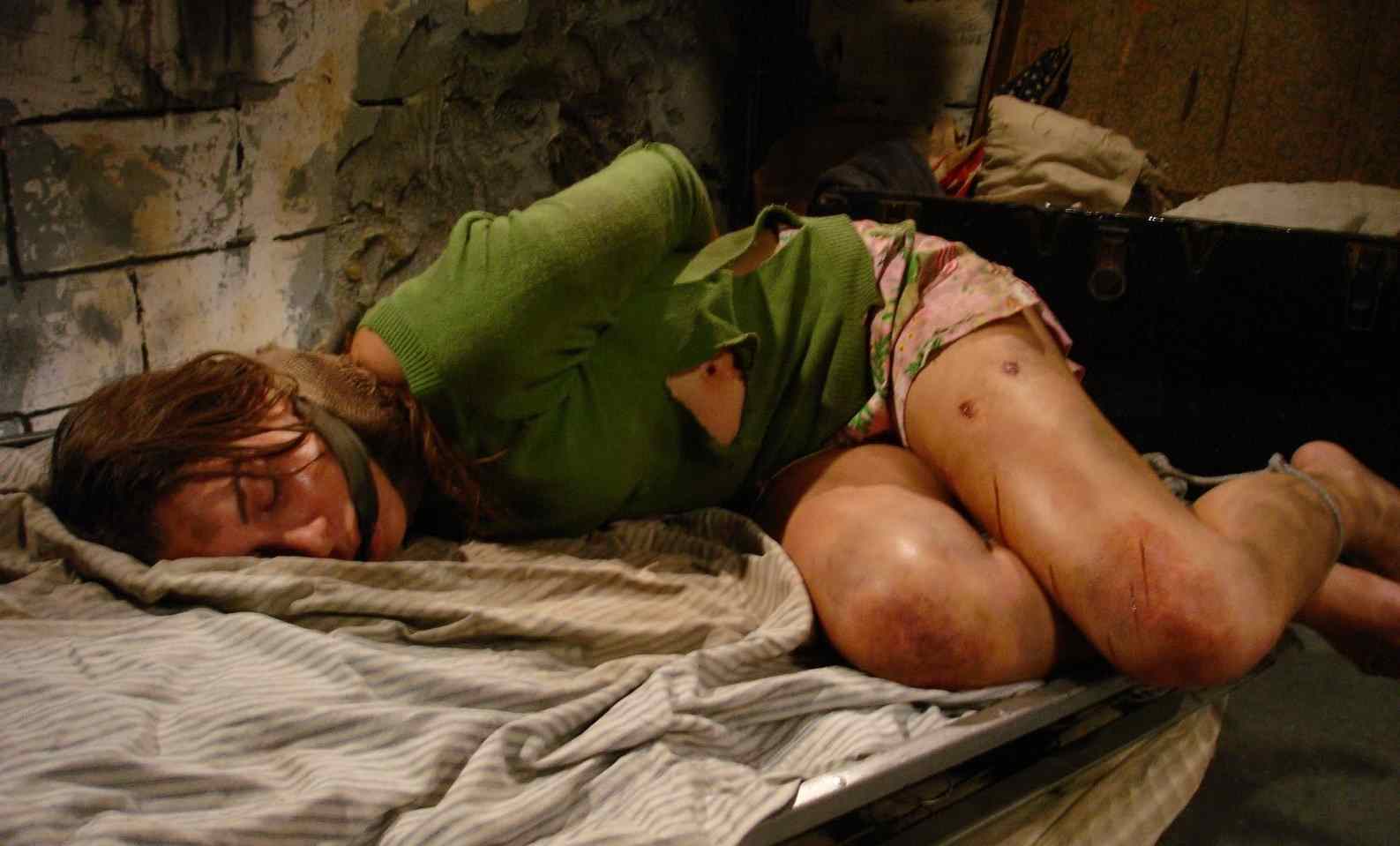It’s been 35 years since Misery’s Annie Wilkes found Paul Sheldon’s wrecked car in snowy Sidewinder, Colorado. Fans of the book—or the classic 1990 film adaptation, or the play starring Laurie Metcalf and Bruce Willis—know what happens next. Annie is Paul’s number one fan, and she wants his recently ended Misery Chastain romance series back and she’s willing to do anything to get that sequel.
In the cold light of 2022, Misery comes off as prescient, tackling the toxic fandom years before social media stoked those flames. It showcases King’s incredible ability to find compelling ways to portray characters stuck in a room.
But he’s not the only author to tread these grounds. Once you’ve read Misery, these other 5 books will handcuff you to a bed and keep you reading.
Content Warning: Many of these books depict sexual assault and torture.
Dracula (1897)
Long before Stephen King wrote Misery—or was, ya know, born—Bram Stoker published a novel King said his mother called “good trash” in his introduction to ‘Salem’s Lot: Dracula. The seminal vampire novel opens with Jonathon Harker making a visit to Dracula’s castle, completely unaware of the existence of vampires. Stoker assumes that his readers don’t either. The Count traps Harker inside of his castle for the first hundred or so pages of the novel as the two play a cat and mouse game.
Modern readers are ahead of Harker as he tries to piece together exactly what the Count is, but the tension of whether or not Harker can escape with his life hasn’t aged a day. Stoker didn’t invent the trope of imprisonment—it’s a mainstay of the gothic fiction that dominated the 1800s—but he does good work with it in the first section of Dracula.
RELATED: 120 Years and Counting: Why Dracula is More Modern Than It’s Given Credit For

Let’s Go Play at the Adams’ (1974)
Mendal W. Johnson’s only published novel, Let’s Go Play at the Adams’, also predates Misery. The book tells the harrowing story of Barbara, a babysitter, restrained by the children she’s supposed to be watching while their parents are on vacation. It’s deeply disturbing. The children start out innocently, but as the novel continues the stakes of their “game” get higher and higher. The novel thunders forward as Barbara struggles to escape and the children wonder whether or not they have to kill her.
Johnson died in 1976, leaving behind an incredible literary legacy with this novel. There are rumors that Johnson wrote other novels, though they’ve yet to see the light of day. Valancourt Books republished Let’s Go Play at the Adams’ with an introduction from Grady Hendrix as part of their Paperbacks from Hell series in 2020.

The Girl Next Door (1989)
Two years after Misery, extreme horror icon Jack Ketchum released his most famous novel, The Girl Next Door. It drew more inspiration from the real life murder Sylvia Likens which it was based on than Misery. Ketchum’s book is unrelenting. Told from the perspective of a neighbor named David, The Girl Next Door recounts a pair of young women moving in with their Aunt Ruth, who is driven by jealousy to chain her older niece Meg in the basement. Ruth allows her sons and the neighborhood boys to “punish” Meg, and as is typical with these types of novels, these punishments escalate over the course of the novel.
Ketchum takes a different approach for building tension than many of the other writers. The main conflict isn’t what’s happening to Meg, it’s whether or not David will finally put an end to it. He can tell his parents at any time. He could call the police. He could sneak into the basement and free Meg himself. This examination of David’s culpability makes readers question how these things happen, and if they’d stop the torture themselves.
The Girl Next Door was adapted into a film in 2007.

Survivor (2004)
Like Ketchum, J.F. Gonzalez is an extreme horror icon. His novel Survivor is nauseating. Lisa Miller’s weekend trip with her husband ends with him wrongly arrested and Lisa kidnapped by men intending to use her in a snuff film. Lisa is thrown into a battle for survival and makes a series of moral compromises to extend her own life.
Gonzalez, by far, goes the deepest into the gory side of torture. People eat eyeballs, kill babies, and commit brutal sexual assaults. Survivor ends on an incredibly bleak note which gives everything that came before it more meaning. It’s a masterful novel and it’s going to hurt you.

An Untamed State (2014)
Before she became a New York Times opinion contributor, founded Tiny Hardcore Press, or published Bad Feminist (though that was later in 2014), Roxane Gay wrote An Untamed State. Her first novel is as brutal as the extreme horror on this list. It tells the story of Mirielle, a young American woman who is kidnapped when she visits her parents in Haiti. When her father refuses to pay the ransom, the gang rapes her repeatedly.
Like Survivor, a big chunk of An Untamed State is about how the physical and emotional trauma of these events shaped Mirielle’s life going forward.

If you can’t get enough, my debut novella Saint’s Blood covers similar ground as Misery as well. It’s about a college professor who’s kidnapped while on an end of semester bender. You can buy it here!





